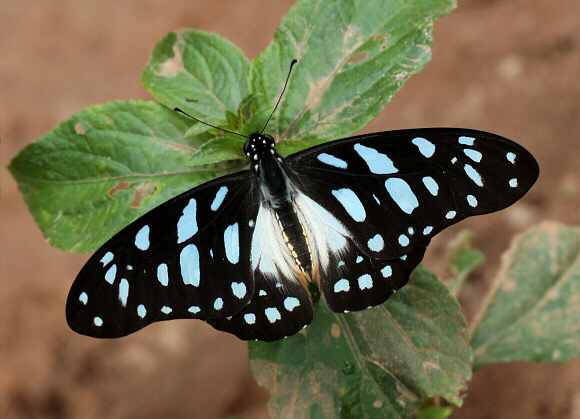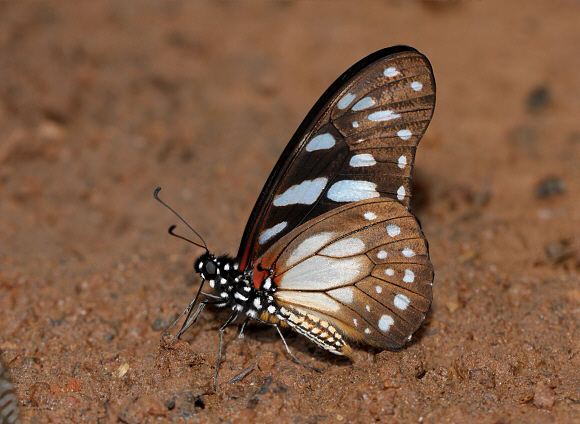
Introduction
There are about 90 recorded species of Papilionidae in the continent of Africa, including 37 in the genus Graphium.
Some Graphium species such as kirbyi and policenes have long sword-like tails but others including angolanus, almansor and leonidas are without tails. The wings of most species are dark brown, and usually bear a pattern of translucent turquoise, white or yellow ‘windows’. Males have a fold on the inner edge of each hindwing which encloses plumes of androconial scales. These specialised scales disseminate pheromones that are used to entice females into copulation.
Graphium leonidas is regarded as being a Batesian mimic of the toxic Danaid Tirumala petiverana which often flies in the same habitats.
Graphium leonidas is found in all forested regions of sub-Saharan Africa.
Habitats
This species breeds in savannah and open woodland but often penetrates rainforest where it can be found in clearings and along wide logging roads.
Lifecycle
The larvae feed on Annona, Monanthotaxis, Uvaria (Annonaceae) and Landolphia (Apocynaceae).
Adult behaviour
Males are seen far more frequently than females, and are usually encountered as singletons or in two’s or three’s amidst aggregations of mud-puddling Pieridae. When not feeding they rest on the foliage of trees or bushes, with the wings held outspread.

